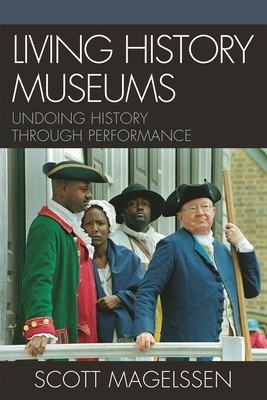
- We will send in 10–14 business days.
- Author: Scott Magelssen
- Publisher: Scarecrow Press
- ISBN-10: 0810858657
- ISBN-13: 9780810858657
- Format: 15.9 x 22.5 x 1.6 cm, softcover
- Language: English
- SAVE -10% with code: EXTRA
Reviews
Description
Living history museums are cultural institutions that merge historical exhibits with live costumed performance. While unique and vitally important, they often compromise historical accuracy and authenticity for the sake of tourism and entertainment value. Many also pursue methods of performance and historiography that are becoming increasingly outdated. Living History Museums: Undoing History Through Performance examines the performance practices used by institutions such as Plimoth Plantation and Colonial Williamsburg, and offers a new genealogy of living history museum performance in the U.S. and Europe. Currently, existing scholarship on living history museums addresses the subject from a museum-studies or anthropology perspective. Author Scott Magelssen, however, approaches the material from a background in theatre history and theory, analyzing living history museums using postmodern methodology. Considering performance as a method for the study of history and exploring emergent non-traditional theatrical practices, the book offers suggestions for performance in an increasingly postmodern landscape. Concluding with an international listing of living history institutions and a complete list of sources, Living History Museums is a valuable resource for students and teachers of theatre and performance studies, cultural studies, folklore, popular culture, American studies, and museum studies.
EXTRA 10 % discount with code: EXTRA
The promotion ends in 17d.13:10:20
The discount code is valid when purchasing from 10 €. Discounts do not stack.
- Author: Scott Magelssen
- Publisher: Scarecrow Press
- ISBN-10: 0810858657
- ISBN-13: 9780810858657
- Format: 15.9 x 22.5 x 1.6 cm, softcover
- Language: English English
Living history museums are cultural institutions that merge historical exhibits with live costumed performance. While unique and vitally important, they often compromise historical accuracy and authenticity for the sake of tourism and entertainment value. Many also pursue methods of performance and historiography that are becoming increasingly outdated. Living History Museums: Undoing History Through Performance examines the performance practices used by institutions such as Plimoth Plantation and Colonial Williamsburg, and offers a new genealogy of living history museum performance in the U.S. and Europe. Currently, existing scholarship on living history museums addresses the subject from a museum-studies or anthropology perspective. Author Scott Magelssen, however, approaches the material from a background in theatre history and theory, analyzing living history museums using postmodern methodology. Considering performance as a method for the study of history and exploring emergent non-traditional theatrical practices, the book offers suggestions for performance in an increasingly postmodern landscape. Concluding with an international listing of living history institutions and a complete list of sources, Living History Museums is a valuable resource for students and teachers of theatre and performance studies, cultural studies, folklore, popular culture, American studies, and museum studies.


Reviews